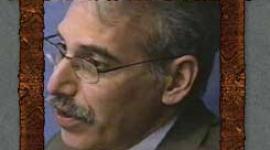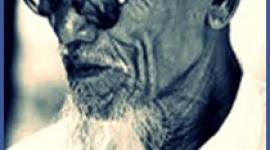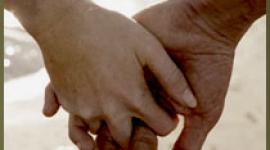Letters from 2 Shock Doctors/Researchers in the Country
University of Health Sciences/The Chicago Medical School
Department of Psychiatry and Behavioral Sciences
3333 Green Bay Road
North Chicago, Illinois 60064-3095
Telephone 708.578.3331
October 10, 1990
Dockets Management Branch
FDA
Room 4-62
5600 Fishers Lane
Rockville MD 20857
Re: 21 CFR Part 882 (Docket No. 82P-0316): Neurological devices; proposed rule to reclassify the electroconvulsive therapy device intended for use in treating severe depression
Gentlemen:
I have the following comments concerning the above-referenced
proposed rule, which appeared in the Federal Register, vol. 55,
No. 172, pp. 36578-36590, Wednesday, September 5, 1990.
1. Limitation of intended use to severe depression, as defined by DSM-III-R criteria for major depressive episode with melancholia. (section IV, p. 36580)
a. Exclusion of non-melancholic major depressives.
The 5 references cited in support of this proposed limitation are mostly outdated--4 of them appeared between 1953 and 1965--especially in view of the several random-assignment, double-blind, sham ECT-controlled studies demonstrating the efficacy of ECT in depressed patients who do not meet DSM-III-R criteria for major depressive episode with melancholia, as follows.
Freeman, Basson and Crighton (1978) found genuine ECT (N=20) superior to sham ECT (N=20) in patients suffering from "depressive illness", which the authors defined only as a persistent mood change exceeding customary sadness, accompanied by at least one of the symptoms of guilt, insomnia, retardation, or agitation. This definition is substantially less restrictive than that for DSM-III-R major depressive episode with melancholia, which requires a minimum of 10 depressive features: at least 5 for major depressive episode plus at least 5 more for melancholia.
West (1981) demonstrated the superiority of genuine (N=11) over sham (N=11) ECT in patients with "primary depressive illness" diagnosed according to the Feighner criteria, which are substantially less restrictive than those of DSM-III-R for major depressive episode with melancholia because they require only 5 depressive features for a "definite" or 4 for a "probable" diagnosis.
Brandon et al (1984) found an advantage for genuine (N=38) vs. sham (N=31) ECT in patients described only as having "major depression", without any specification as to endogenicity, psychosis, melancholia, or number or type of symptoms required.
Gregory et al (1985) reported an advantage for genuine (N=40) vs. sham (N=20) ECT in patients who met ICD-9 criteria for major depressive disorder (296.2/3), which are very simply and broadly defined as "a widespread depressed mood of gloom and wretchedness with some degree of anxiety", often with reduced activity or agitation and restlessness, and much less restrictive than DSM-III-R criteria for major depressive episode with melancholia.
Moreover, the FDA's own summary of data in support of the proposed reclassification (section IV para. A, p. 36580) relies heavily on the 1976 study of Avery and Winokur (FDA reference #7) to support the claim that ECT exerts more potent antidepressant effects than tricyclic antidepressants. The Avery and Winokur (1976) study, however, employed only a Feighner "probable" diagnosis of depression--that is, at least four depressive symptoms--which is far less restrictive than DSM-III-R requirements for a major depressive episode with melancholia.
Thus, the proposed rule to limit the use of ECT devices in the treatment of major depression to patients who meet DSM-III-R criteria for major depressive episode with melancholia is unjustifiably restrictive, and should be broadened by dropping the "with melancholia" qualifier.
b. Exclusion of patients with schizophrenia.
The FDA's position (p. 36582) that the evidence regarding the efficacy of ECT in schizophrenia is inconclusive because it is based on mainly anecdotal and uncontrolled studies omits consideration of two important double-blind, random assignment, sham-ECT controlled studies:
Bagadia et al (1983) found a course of 6 genuine ECTs plus placebo (N=20) to be therapeutically equal to a course of 6 sham ECTs plus 600 mg/day chlorpromazine (N=18) in a sample of 38 patients who met the stringent Research Diagnostic Criteria for schizophrenia. This study is notable for excluding patients with prominent affective symptoms.
Brandon et al (1985) found a course of 8 genuine ECTs (N=9) significantly more effective than 8 sham ECTs (N=8) in lowering Montgomery-Asherg Schizophrenia Scale scores in a sample of 17 patients diagnosed as schizophrenic according to the PSE-based CATEGO program.
Taken together with the Taylor and Fleminger (1980) sham-ECT controlled study cited by the FDA, these reports provide strong scientific evidence for the efficacy of ECT in schizophrenia.
c. Exclusion of patients with the diagnosis of mania.
In taking the position (p. 36585) that further scientific study is needed to demonstrate the effectiveness of ECT in mania, the FDA notes that it is already aware of the "well-designed prospective study" by J.G. Small et al (1988) . Perhaps because it is the only controlled study on the subject, the FDA apparently decided not to give it much weight; it is necessary, however, to place this study in a perspective that includes the fact that virtually every textbook on ECT, and every clinician experienced with using ECT, agrees that ECT is no less effective in mania than in melancholia. Moreover, the Small et al (1988) study must also be viewed in the context of a series of carefully-conducted retrospective chart review studies drawn from very large patient samples treated over many years (McCabe, 1976; McCabe and Norris, 1977; Thomas and Reddy, 1982; Black, Winokur, and Nasrallah, 1987), that provide compelling if not definitive evidence for a substantial anti-manic effect of ECT--in fact, no contradictory data exist. In this sense, the case was already considered proved by most experts, and lacked only the "formality" of confirmation by a controlled trial such as that of Small et al (1988)
It is further noteworthy that the recent chart review study of Black, Winokur, and Nasrallah (1987), which shows a much greater efficacy of ECT than lithium in the treatment of mania, was done at the same institution and with the same methodology as the study of Avery and Winokur (1976) that is so prominently cited by the FDA in support of the greater efficacy of ECT than antidepressant drugs. Moreover, Avery and Winokur (1976) reported that only 49% of depressives receiving ECT enjoyed "marked improvement", whereas Black, Winokur and Nasrallah (1987) found that 78% of manics who received ECT achieved this degree of improvement.
These considerations all strongly suggest that FDA should include mania as a prime indication for ECT in the proposed labeling requirement.
2. The proposed labeling requirement that the use of ECT should progress from unilateral to bilateral placement, from pulse to sine wave energy, and from subcritical to minimum amount of energy needed to induce seizure activity.
The unfortunate result of this well-intended but antitherapeutic requirement is that all patients must intially receive brief pulse right -unilateral ECT administered with near-threshold dosing, ignoring the elegant study of Sackeim et al (1987) , which conclusively demonstrates that just-above-threshold brief pulse right unilateral ECT lacks significant therapeutic benefit in depression. The requirement also ignores the fact that the only one out of 6 genuine vs. sham ECT studies that failed to show an advantage for genuine ECT (Lambourn & Gill, 1978) employed low- dose (1OJ energy) brief pulse unilateral ECT as the "active" treatment.
Finally, my colleagues and I (Abrams, Swartz and Vedak, Arch. Gen. Psychiat., in press, copy enclosed) have recently demonstrated that high-dose (markedly suprathreshold) brief pulse right unilateral ECT is equal in therapeutic efficacy to bilateral ECT, in contrast to an earlier study at the same site (Abrams et al, 1983) that found conventional-dose unilateral ECT to be much less effective than bilateral ECT.
Sincerely yours,
Richard Abrams, M.D.
Professor of Psychiatry
STATE UNIVERSITY OF NEW YORK AT STONY BROOK
SCHOOL OF MEDICINE - DEPARTMENT OF PSYCHIATRY
P.O. BOX 457
ST. JAMES, N. Y. 11780
PHONE: 516-444-2929
October 26, 1990
Dockets Management Branch (HFA-305)
Food and Drug Administration
5600 Fishers Lane, Room 4-62
Rockville, MD 20857
Ref: 21 CFR Part 882 Docket # 82P-0316
Gentlemen:
The FDA proposed reclassification of ECT (electroconvulsive therapy) devices to class II is commendable. The restriction in labelling for patients with "Major Depression with Melancholia" is inconsistent, however, with present practice, international experience since 1934, and numerous recent expert reviews, notable that of the Royal College of Psychiatrists of Great Britain in 1989 (1) and the American Psychiatric Association in 1990 (2). Nor is it consistent with the changing diagnostic schemes which are now beginning to view major mental illnesses as varying manifestations of a single endogenous disorder. In the proposed rule and in its in-house Task Force Review of the Literature on ECT. 1982 to 1988, dated June 10, 1988, the FDA failed to fully consider the scientific literature, failed to comprehend the meaning of the studies, and ignored well designed studies, some of which they cited and derogated.
I urge the FDA to recognize that ECT devices, when properly used to induce seizures, are effective for a range of disorders broader than that cited in the rule: ECT is effective for endogenous psychiatric illnesses in which psychosis can occur. In the present classification scheme (DSM-IIIR), these include (but are not limited to) the mood disorders of major depression, bipolar disorder (manic or depressed or mixed phases), with or without psychosis (296.xx); and schizophrenia, catatonic type (295.2x). Since it is highly likely that these labels will be changed in the next few years (DSM-IV is in preparation), a description of the populations suitable for ECT which define the labelling of these devices should be as broad as the prevailing evidence of efficacy and safety allow.
It is often difficult to separate these diagnoses, and many patients exhibit a variety of syndromes in the course of their lifelong illness. It is not unusual for patients to be depressed in one admission, psychotic and depressed in a second, and manic in a third. And these states may or may not be associated by melancholic signs and symptoms. Limiting the use of a treatment to the melancholic phase of an illness as if such a phase is unique is in error and will do a disservice to large numbers of patients.
Others have argued persuasively the merits of ECT in the treatment of a wide range of depressive disorders, notably psychotic depression (3); bipolar disorder with mania (4); and schizophrenia (5). Their arguments have been persuasive for the Task Force of the American Psychiatric Association (2) and the Royal College of Psychiatrists (1). It would be redundant for me to reiterate their persuasive arguments, when the agency staff can read those arguments directly.
I wish to comment on three issues in the recommended rule: the use of ECT in the syndrome of catatonia, in mania, and the recommendations for a sequence in treatment parameters.
Catatonia: When convulsive therapy was developed by Prof. Ladislas Meduna in Budapest in 1934, it was first used (and most successfully) in a patient with catatonia. When the first electrical inductions were made by Professors Ugo Cerletti and Luigi Bini in Rome in 1938, it was for a patient with catatonia. Catatonia is an uncommon psychiatric syndrome, but one which occurs in patients with psychosis (catatonic schizophrenia), in mania and depression (6), and secondary to medical disorders, such as lupus erythematosus and typhoid fever (7). Catatonia is also seen as a manifestations of a toxic reaction to antipsychotic drugs -- the syndrome is known as neuroleptic malignant syndrome. Finally, catatonia has a form known as malignant catatonia, a disorder that is rapidly fatal. In each of these conditions, ECT has been found to be life-saving (8).
For example, in our hospital last year, we were called to treat a young woman with lupus erythematosus who developed a malignant form of catatonia. She was cachectic, was unable to stand or feed herself, and had lost 25% of her body weight. All medical treatments having failed, after five weeks she was treated successfully and rapidly with ECT, and was well in one year follow-up (9).
I recognize that the APA classification schemes, DSM-III and DSM-IIIR do not specifically recognize this syndrome except as a type of schizophrenia (295.2x). Nevertheless, ECT has been life-saving in this syndrome and it is essential that this application be made a feature of labelling (9).
Mania: The syndrome of mania appears in many guises, that of excitement and overactivity, psychosis, psychosis with melancholia, and delirium. It is often thought of as the obverse of depressive mood. In the history of convulsive therapy, manic conditions were identified as suitable for ECT at the same time that depressive states were identified. The development of lithium and its use with antipsychotic drugs replaced the use of ECT for a time -- long enough to determine that therapy resistant and rapid cycling manic patients of may not respond to medication. In such cases, ECT is life-saving. In our recent experience, we have treated two patients in manic delirium who had been continually hospitalized for 2 and for 3 years. Further, a severely manic woman with sickle cell disease, in her second trimester of pregnancy, could not be treated with medication; ECT was highly successful (10).
Treatment Parameters: The FDA proposed rule states that "ECT use should progress from unilateral to bilateral electrode placement and from brief-pulse to sine wave stimulation and from subcritical to minimum amounts of energy needed to induce seizure activity." This recommendation is wholly inconsistent with present practice and with the recommendations of national task forces (1, 2). By making such a recommendation, the FDA is engaging in the practice of medicine, a stipulation from which the agency is clearly enjoined.
The choice of electrode placement is determined by the type of syndrome, medical status, need for urgency in response, and individual psychology and employment. The 1990 APA report does not recommend unilateral placement as the initial choice for all cases; nor does it reserve bilateral placement as a secondary use. It stipulates that each case must be treated individually. In clinical practice, for patients who have concurrent medical illness where each anesthesia exposure must be considered, bilateral electrode placement is clearly preferred. In patients who are severely suicidal, or severely manic (especially where restraints are a consideration), bilateral placement is preferred. For severely catatonic patients, especially if mute and requiring tube-feeding, bilateral placement is preferred. The use of unilateral electrode placements, with their associated 15% response failure rate, is clearly dangerous to these patients (11).
Stimulation currents at subthreshold energy levels are associated with failed or inadequate seizures. Seizures which have been induced at marginal doses of energy are clearly less efficient than those with suprathreshold currents (12), especially when brief-pulse currents and unilateral electrode placements are used (13). Recent research led the two national reviews (1,2) to argue for moderately suprathreshold currents to induce seizures and to monitor seizure duration as an index of treatment efficacy. Comparisons of U.S. experience with fixed dose brief pulse currents with Scandinavian/German experience with variable dose, modified sinusoidal currents finds a greater number of treatment failures in the fixed dose methodology.
Since the definition of an adequate treatment is under active study, the prescription of a defined sequence of treatment parameters is clearly premature and prejudicial to medical practice.
I commend the FDA in seeking to clarify the status of ECT devices, and I urge the agency to simplify the classification and labelling requirements by assigning these devices to Class II. The labelling should be consistent with more than half a century of experience and research, and must include a wider range of endogenous psychiatric illnesses, including the affective illnesses of severe depression and mania, catatonic schizophrenia, and the special syndrome of primary and secondary catatonia.
But the agency should resist interfering in medical practice by seeking to define the technical details of electrode placement, energy level, and current type and dose, leaving these details to the continuing developments of the profession and departures from prevailing practice to case law.
I have been a licensed physician since 1945; certified in neurology in 1952, in psychiatry in 1954, and in psychoanalysis in 1953. I have been a practitioner of ECT since 1952; a researcher in ECT since 1954 with more than 200 publications in convulsive therapy; editor (with Seymour Kety and James McGaugh) of the volume Psychobiology of Convulsive Therapy (Winston/Wiley, New York, 1974); author of the textbook Convulsive Therapy: Theory and Practice (Raven Press, New York, 1979); and Editor-in-Chief of Convulsive Therapy, a quarterly scientific journal published by Raven Press, since its inception in 1985. I have been a Professor of Psychiatry at various medical schools since 1962.
Sincerely yours,
Max Fink, M.D. Professor of Psychiatry
Citations:
1. Royal College of Psychiatrists. The Practical Administration of Electroconvulsive Therapy (ECT). Gaskell, London, 30 pp., 1989.
2. American Psychiatric Association. The Practice of ECT: Recommendations for Treatment. Training and Privileging. American Psychiatric Press, Washington, D.C., 1990.
3. Avery, D. and Lubrano, A.: Depression treated with imipramine and ECT: the DeCarolis study reconsidered. Am. J. Psychiatry 136: 559-62, 1979.
Kantor, S.J. and Glassman, A.H.: Delusional depressions: natural history and response to treatment. Br. J. Psychiatry 131: 351-60, 1977.
Kroessler, D.: Relative efficacy rates for therapies of delusional depression. Convulsive Ther. 1:173-182,1985.
4. Milstein, V., Small, J.G., Klapper, M.H., Small, I.F., and Kellams, J.J.: Uni-versus bilateral ECT in the treatment of mania. Convulsive Ther. 3: 1-9, 1987.
Mukherjee, S., Sackeim, H.A., Lee, C., Prohovnik, I., and Warmflash, V.: ECT in treatment resistant mania. In; C. Shagass et al. (Eds.): Biological Psychiatry 1985. Elsevier, New York, 732-4, 1986.
Berman, E. and Wolpert, E.A.: Intractable manic-depressive psychosis with rapid cycling in an 18-year-old woman successfully treated with electroconvulsive therapy. J.N.M.D. 175: 236-239,1987.
next: Margot Kidder Pushes Alternative Mental Health
~ all Shocked! ECT articles
~ depression library articles
~ all articles on depression
APA Reference
Staff, H.
(2007, February 19). Letters from 2 Shock Doctors/Researchers in the Country, HealthyPlace. Retrieved
on 2025, November 29 from https://www.healthyplace.com/depression/articles/letters-from-2-shock-doctorsresearchers-in-the-country



